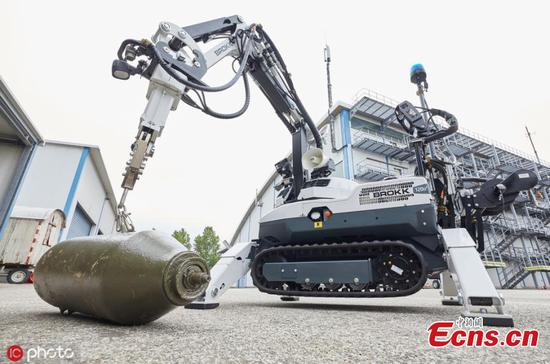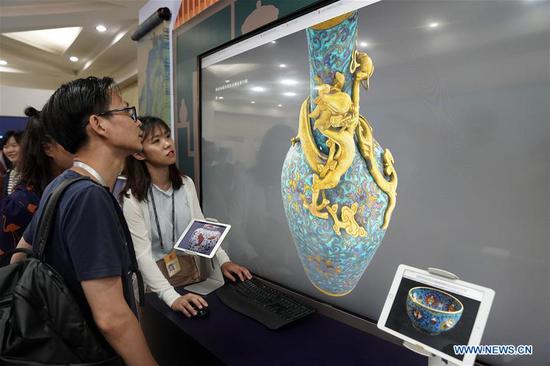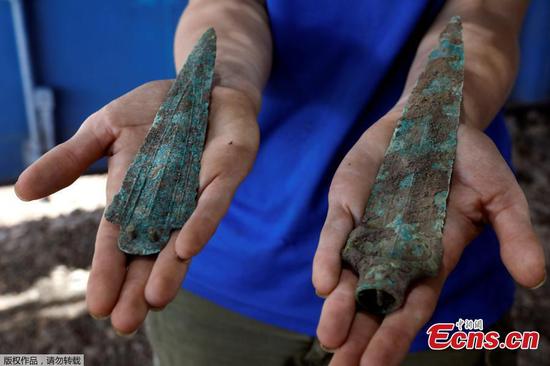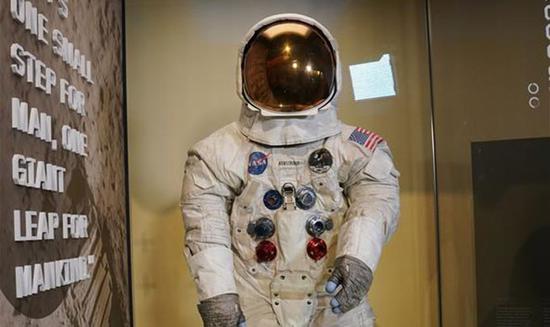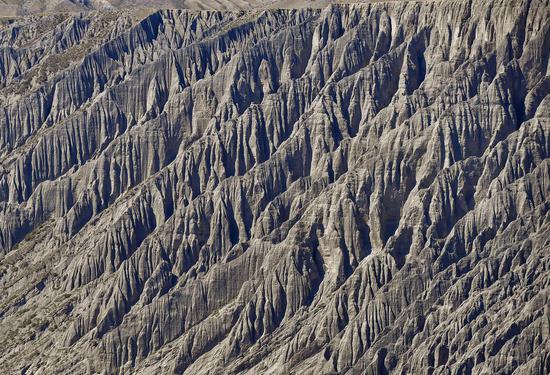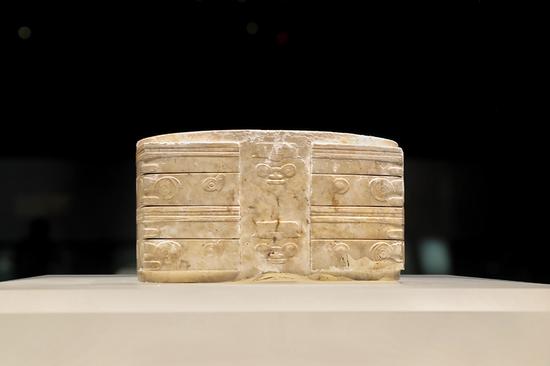Engineers at NASA's Jet Propulsion Laboratory (JPL) have installed a sensor-filled turret on the end of the robotic arm of the Mars 2020 rover, according to a release of JPL on Wednesday.
The rover's turret includes HD cameras, the Scanning Habitable Environments with Raman and Luminescence for Organics and Chemicals (SHERLOC) science instrument, the Planetary Instrument for X-ray Lithochemistry (PIXL), and a percussive drill and coring mechanism.
On Mars, the 2.1-meter-long robotic arm and turret will work together, allowing the rover to work as a human geologist.
It would reach out to interesting geologic features, scrap, analyze and even collect them for further study via Mars 2020's Sample Caching System. The system includes 17 motors and will collect samples of Martian rock and soil that will be returned to Earth by a future mission, according to JPL.
"Back when we started this project in 2013, we came up with a timeline to chart mission progress," said John McNamee, Mars 2020 project manager at JPL. "That every single major spacecraft component on a project with this level of innovation is synching right now with that timeline is a testament to the innovation and perseverance of a great team."
Mars 2020 will launch from Cape Canaveral Air Force Station in Florida in July 2020. It is scheduled to land at Jezero Crater on Feb. 18, 2021. Enditem



















